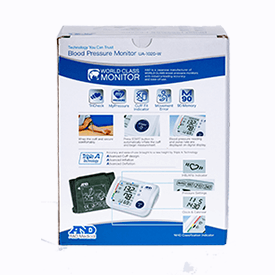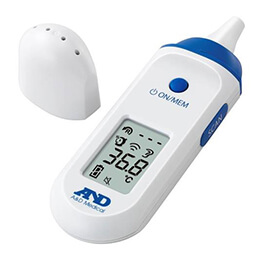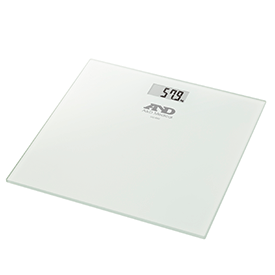Knowledge Center
How do I take my BP at home?
This video link is a good guide of how to take your BP at home using our instruments. Here are some other important things to keep in mind:...
Be still. Don't smoke, drink caffeinated beverages or exercise within 30 minutes before measuring your blood pressure. Empty your bladder and ensure at least 5 minutes of quiet rest before measurements.
Sit correctly. Sit with your back straight and supported (on a dining chair, rather than a sofa). Your feet should be flat on the floor and your legs should not be crossed. Your arm should be supported on a flat surface (such as a table) with the upper arm at heart level. Make sure the bottom of the cuff is placed directly above the bend of the elbow. Check your monitor's instructions for an illustration or have your healthcare provider show you how.
Measure at the same time every day. It’s important to take the readings at the same time each day, such as morning and evening. It is best to take the readings daily however ideally beginning 2 weeks after a change in treatment and during the week before your next appointment.
Take multiple readings and record the results. Each time you measure, take two or three readings one minute apart and record the results using a printable (PDF) or online tracker. If your monitor has built-in memory to store your readings, take it with you to your appointments. Some monitors may also allow you to upload your readings to a secure website after you register your profile.
Don't take the measurement over clothes.
Why is my blood pressure reading different at my doctor’s office vs. my home?
More and more, healthcare providers are asking people to take their blood pressure (BP) at home regularly because it provides them with helpful information in managing their health. ...However, when people start taking their BP at home, some notice differences between their at-home measurements and their in-office measurements. Here are some of the reasons why:
White Coat Hypertension
As the name suggests, White Coat Hypertension (WCH), is when your blood pressure readings are abnormally elevated in a medical environment. It’s fairly common, affecting around 20 percent of adults.
Thankfully, once you identify it, there are steps you can take to reduce your blood pressure and anxiety. Taking deep breaths, thinking happy thoughts, and even limiting your time in the waiting room can help to lower your blood pressure. Some find that their nerves ease as their appointment progresses. Simply asking your doctor to take another reading at the end of your appointment can result in a more accurate reading.
Masked hypertension
AOn the other side of that misleading-blood-pressure coin is masked hypertension. This refers to a situation where your reading is lower at the doctor’s office than it is at home.
Masked hypertension can be very difficult to diagnose, and it requires an open conversation with your physician, a great deal of honesty on your part, and at-home monitoring (potentially even wearing a 24-hour blood pressure monitor for a day or two).
Cuff fit and technique differences
Cuff fit - ensure that you measure your arm and purchase the correct size cuff. A cuff that is too small will make your reading artificially high. A cuff that is too large will result in a reading that is artificially low. To determine the right cuff size for you, with your arm hanging at the side of your body, measure the circumference of your upper arm at the midpoint between shoulder and elbow.
Technique - if you don't apply the cuff correctly or make a few other errors, your blood pressure readings could differ from your true values. If you're unsure if you're taking your blood pressure correctly, consider asking your healthcare provider to watch you take your blood pressure and adjust as necessary.
Other factors to consider:
Keep in mind that other factors can impact your blood pressure too. For 30 minutes before taking a measurement, be sure to avoid the following:
1- Smoking or other forms of nicotine
2- Drinking alcohol or caffeine
3- Taking a bath
4- Eating
5- Exercise
6- All of these things can raise your blood pressure beyond your normal, resting rate.
How do I manage my BP while travelling?
Travel is many things—a break, an opportunity, and, occasionally, a whole lot of stress. And when you’re trying to manage your high blood pressure on the go, ...it only adds to the stress. No matter your destination, or if you’re hitting the road for work or leisure, you can’t leave your heart health at home. Here are some helpful tips:
Take a trip…to your doctor
If you struggle to manage your high blood pressure, this is a must. First and foremost, your doctor can determine if travel is safe for you.
Once you have the go-ahead, they can advise on how to avoid issues and provide management tips for your specific concerns. This is especially true if you’re traveling by air since symptoms of hypertension worsen at higher altitudes.
Take some certainty
Away from home and your usual resources, it can be hard to know for certain how well you’re managing your blood pressure. A wrist monitor (like the Premium Wrist Blood Pressure Monitor) allows you to bring that confidence with you.
Take a deep breath
It’s not a secret that stress can raise your blood pressure (sometimes significantly), and travel comes with more than its fair share of stress.
When you’re feeling the strain of travel (or life) it can help to take a beat and breathe in deep. In fact, slowing your breathing to six breaths every 30 seconds has been shown to temporarily lower blood pressure.
What is Clinical Validation for a Blood Pressure Monitor?
One of the most common questions we hear is “What does clinical validation mean?”. When you see a "Clinically Validated for Accuracy" symbol on an A&D product, ...it means that the product has been thoroughly tested and has stood up to the medical industry's world-class protocols.
In recent years, physicians have come to see the value of monitoring blood pressure at home to compliment treatment of their hypertensive patients. One of the most important considerations when home monitoring is recommended is the patient having access to accurate devices with validations performed under strict protocols. At A&D, because we are confident in the accuracy of our devices and the ability to be able to fulfil the strict requirements of healthcare professionals, all our blood pressure monitors are rigorously tested and validated independently to meet clinical standards.







